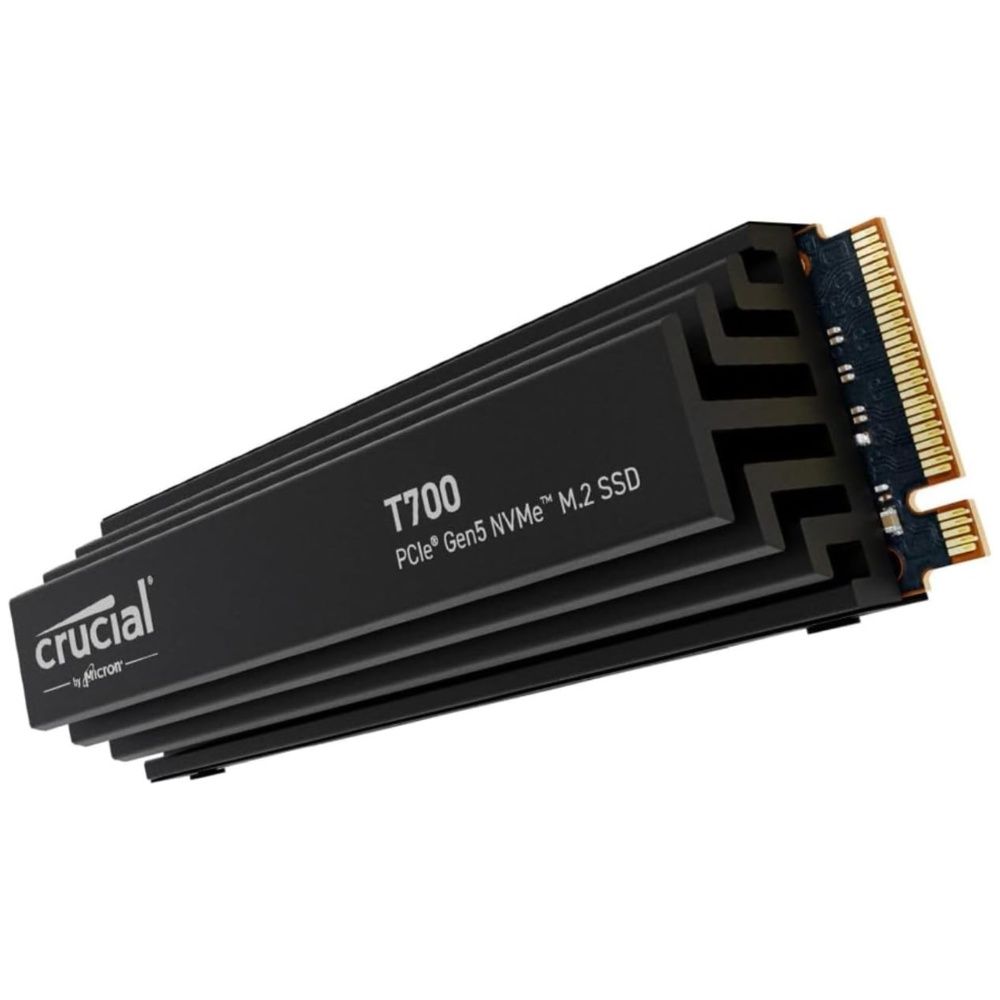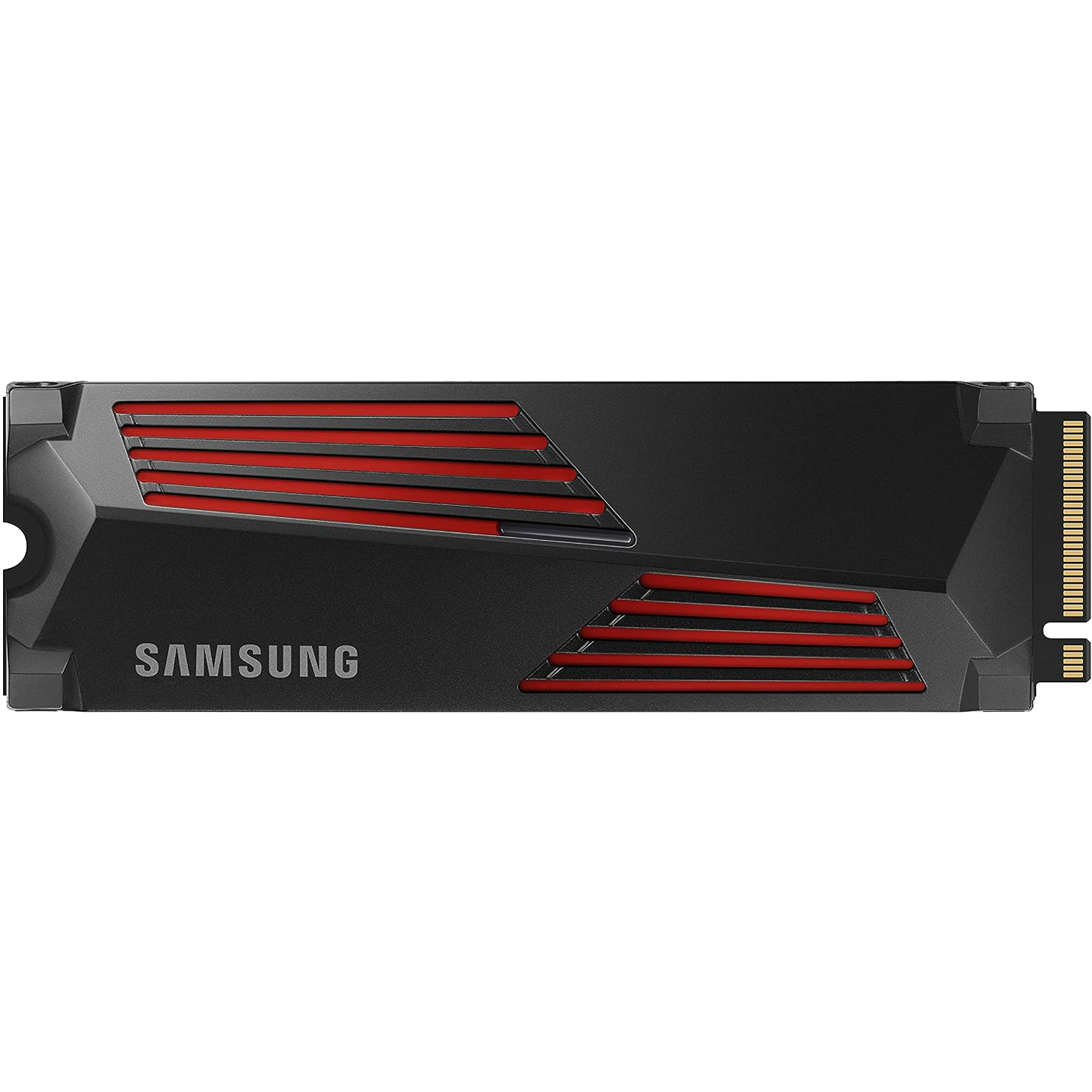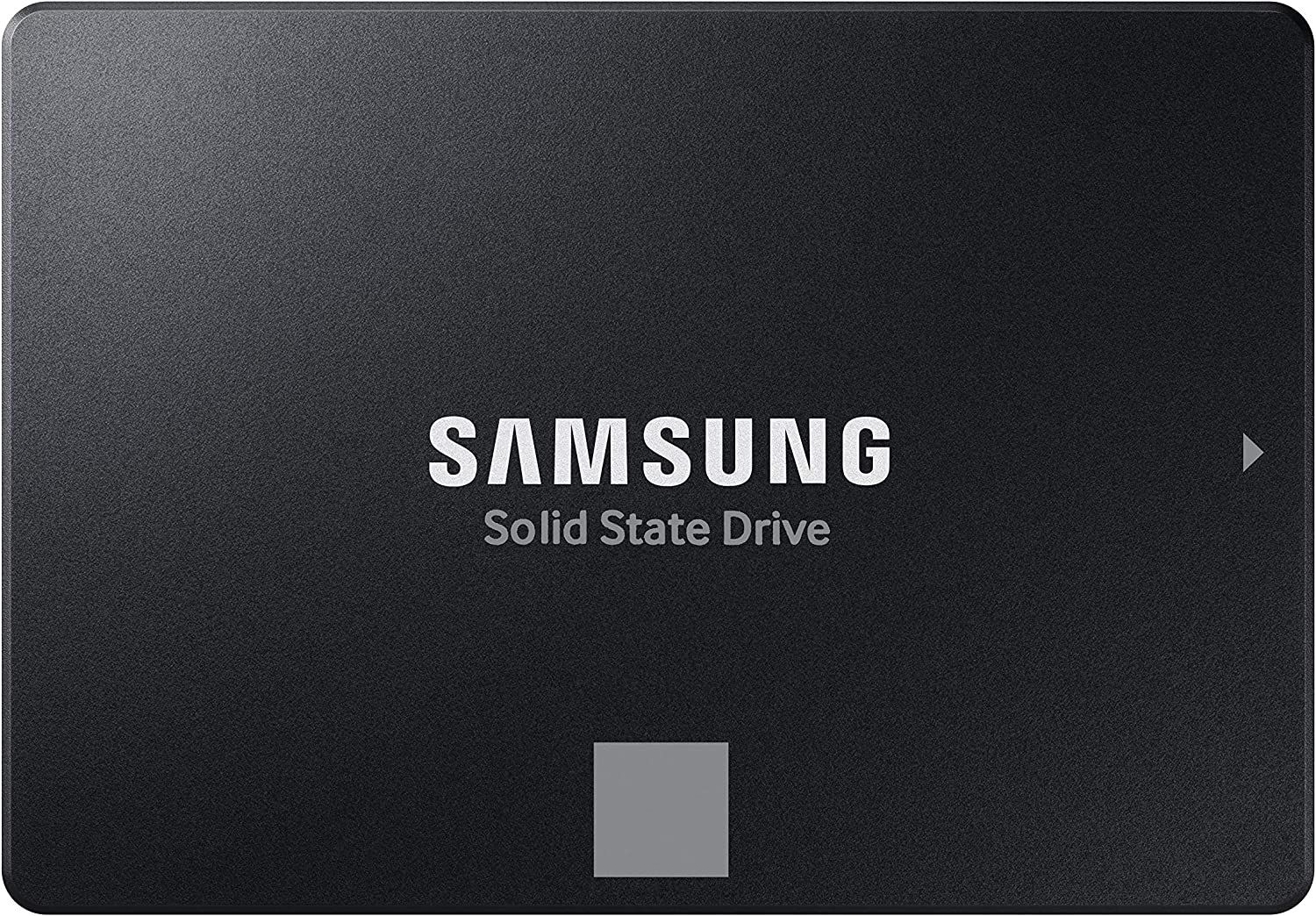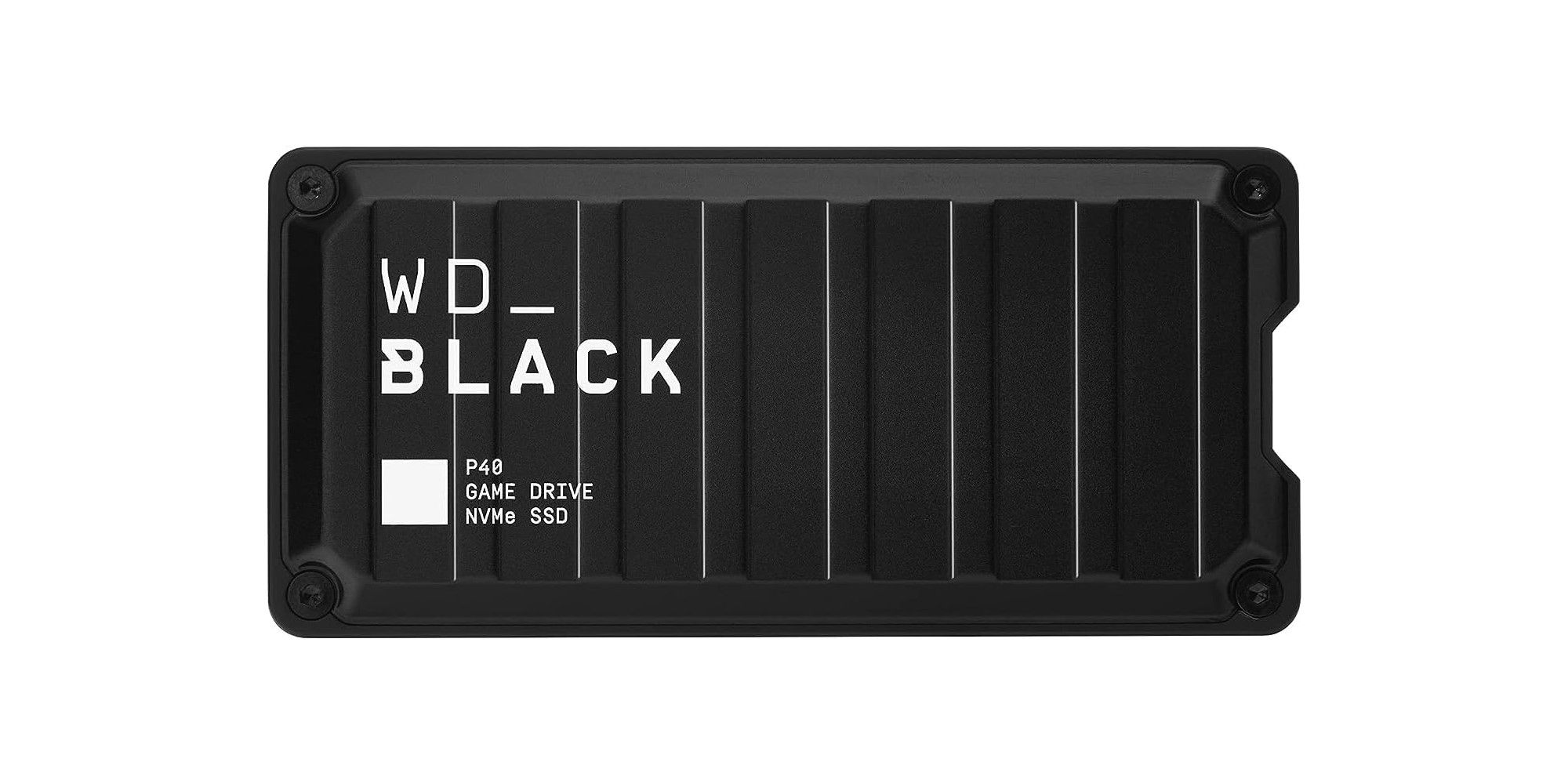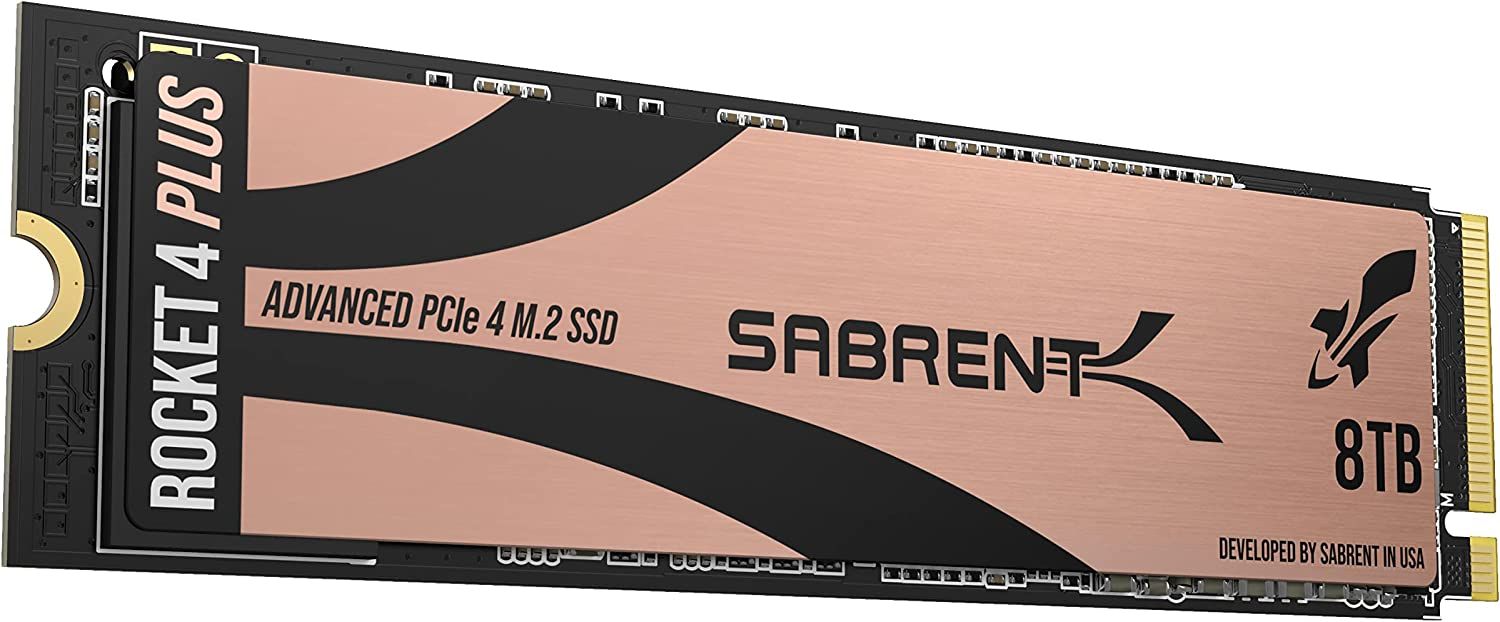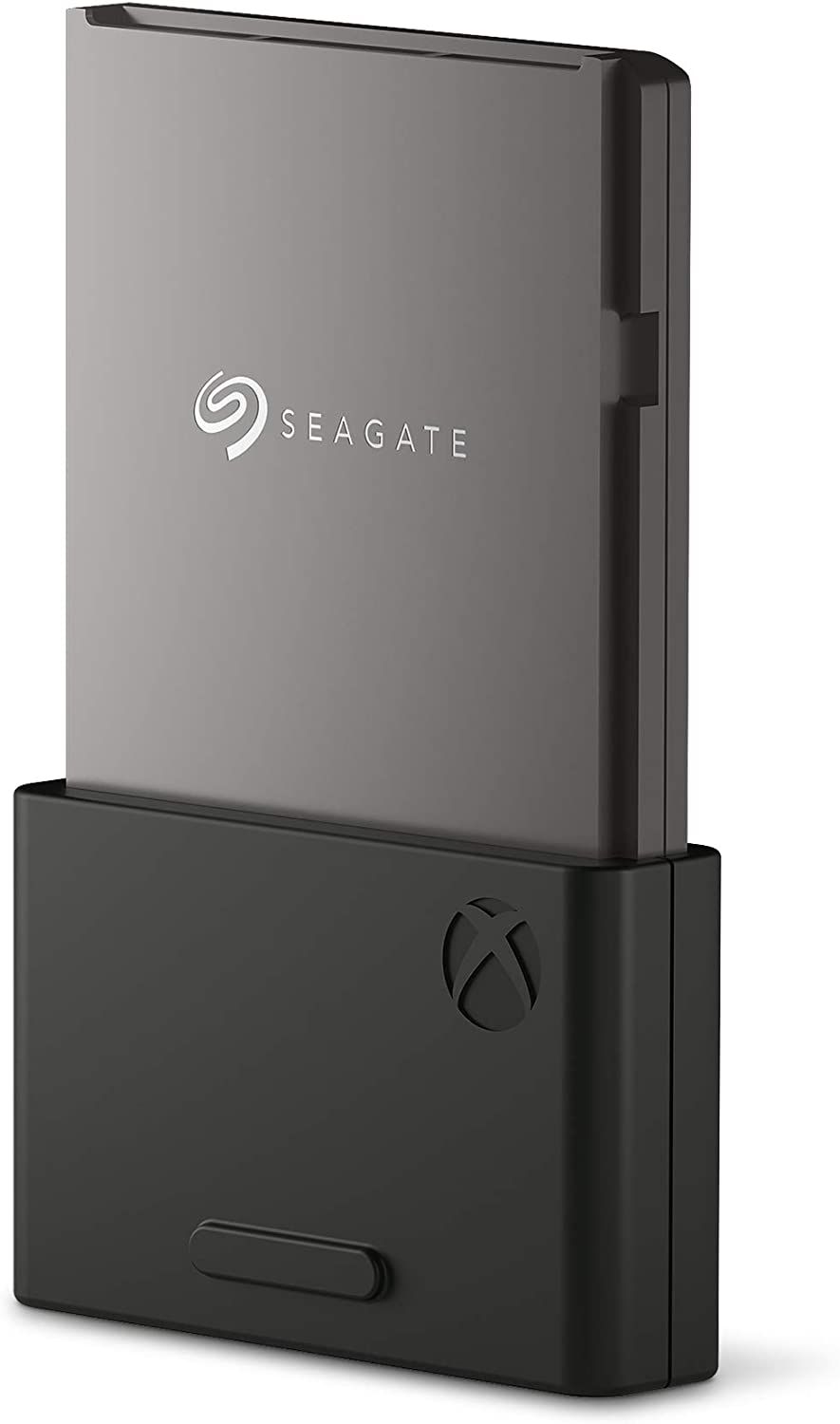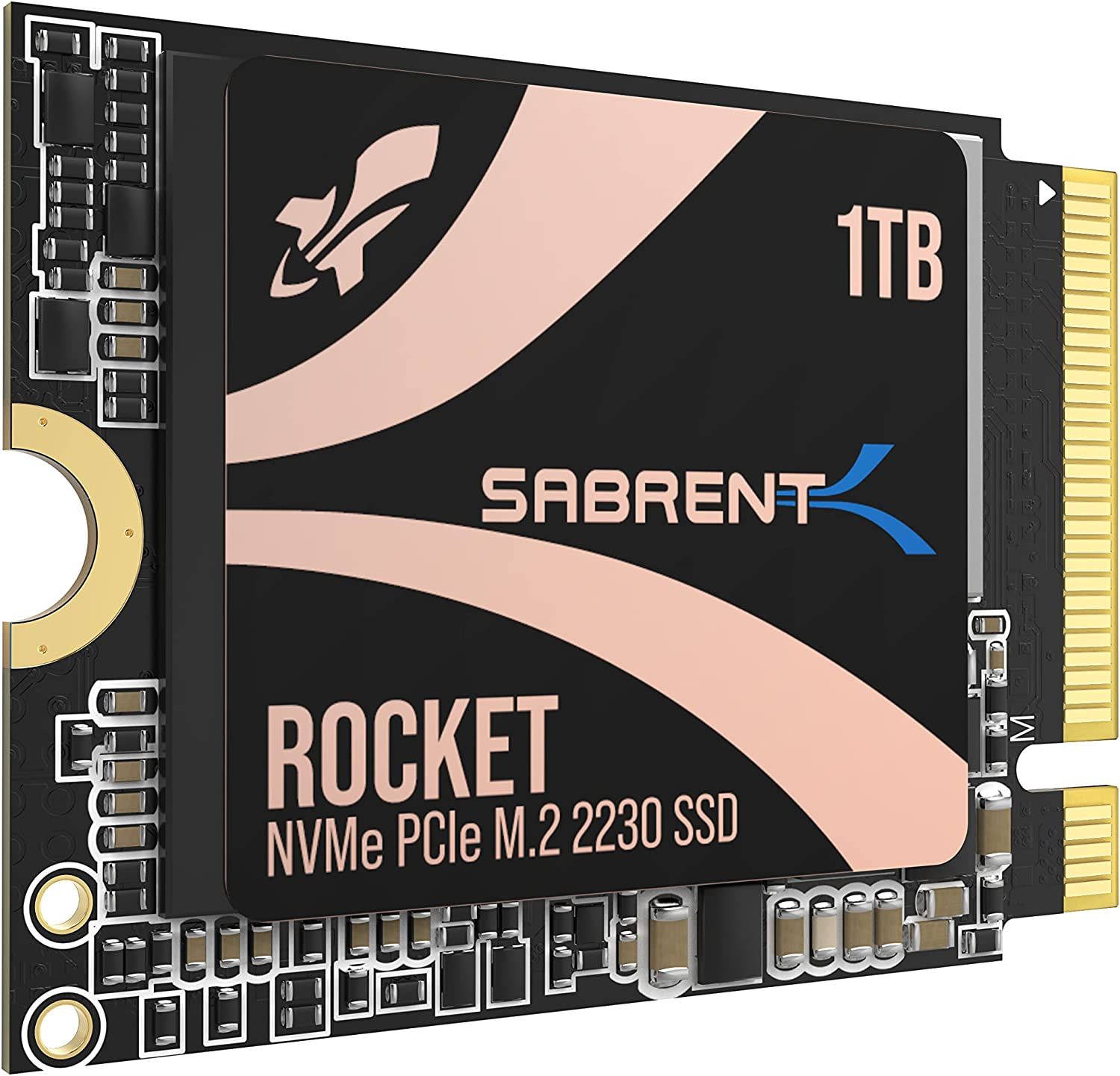PC and console games have become increasingly demanding in terms of storage. As a result, some of the advances made to ensure that gamers can access games faster involve better connectivity, storage, and memory. Storage in particular has seen much more performance gains across the board as the medium has changed significantly along with faster controllers and cheaper storage prices in tow, bringing about widespread adoption and a slew of options. The biggest example of this is that Solid State Drives (SSDs) in modern consoles are now both embedded in the motherboard and a minimum standard for external storage.
The best SSDs for gaming have evolved tremendously over the past few years too, going from what was once a bragging-rights novelty for PC gamers and often used in enterprise-grade applications, to something that is now considered essential tech for any new PC or console that is built from the ground up for gaming. Over time, as the underlying technology continues to mature, SSDs are both cheaper and have higher capacity today than they did a few years ago as they come in multiple shapes and sizes.
Updated on May 26, 2024 by Rahim Amir: The guide below now features PCI-E 5.0 SSDs more often given recent price revisions that saw multiple price cuts on a range of PCI-E 5.0 SSDs. All prices and options below have also been updated.
With PCI-E 5.0 SSDs becoming more accessible, 2024 is a great time to be in the ever-changing market for high-performance storage, whether it is for a new build or simply for an upgrade to an existing laptop, gaming/productivity PC, or console.

The Best CPUs in 2024
Intel, AMD, and now even ARM CPU's are competing for the best CPU spot on the mark. How you work and what your budget is will determine this decision.
The Best SSDs for Gaming in 2024
With new SSD options slowly populating the storage market, it makes sense to pick some of the best PCI-E 5.0 SSDs available to end users especially when they witness a series of price cuts. The Crucial T700 SSD allows users to do just that at a price that grows increasingly accessible over time. Thanks to its PCI-E Gen 5x4 interface and included heatsink, the Crucial T700 can reach blazing-fast read speeds of up to 12400 MB/s and write speeds of up to 11800 MB/s which max out on the 2 Terabyte model as opposed to the slightly slower 1TB SKU.
What most users might not know however is that PCI-E 4.0 SSDs already run hot when it comes to bleeding edge models. PCI-E 5.0 models are a completely different ball game and even with the preinstalled heatsink, users can expect to deal with some level of thermal throttling when under sustained load. This would, however, be considerably less than operating the SSD without a heatsink or with most motherboards that leverage a more general-purpose heatsink design even when in play.
Crucial's offering does lack a fan or an extremely large like some of its competitors offer. Still, it does allow for better compatibility in smaller cases and for more hardware than its alternatives even as it promises excellent peak performance. It does not, however, make sense to get one for a game console currently as the current crop of consoles that support M2 drives are limited at best, to PCI-E 4.0 SSD compatibility.
For users needing a new PCI-E Gen 5 SSD, the Teamgroup T-Force Cardea Z540 1TB is one of the best contenders in play. It offers breakneck read speeds with matching write speeds in a low-latency, low-profile package versus most of its chunkier alternatives, many of which use much larger heatsinks to stay cool when under load. This is due to Teamgroup's graphene-based heatsink allowing for wider compatibility with PCs and laptops than its alternatives while keeping a handy form factor in play.
Despite the sub 12GB/s read speeds in play and 10GB/s write speeds on offer, the Teamgroup T-Forc Cardea Z540 is not much more expensive than premium M2 SSDs in the PCI-E Gen 4 spectrum, clocking in just $15 more than the Samsung 990 Pro Heatsink model at the time of writing. It does require a PCI-E 5.0 compatible motherboard to get the most out of it, making it a somewhat expensive upgrade for those who do not already have one.
With a 5-year warranty, a high MTBF and TBW rating, and solid user reviews in tow, the Teamgroup T-Force Cardea Z540 seems to be a cut above its PCI-E gen 5 peers on multiple fronts going into 2024.

The Best Motherboards For The 14900K
These are some of the best motherboards you can pair with Intel's fastest consumer-grade CPU.
For those who have been following the Samsung Pro lineup, the Samsung 990 PRO NVMe 4.0 SSD 2 TB with heatsink needs no introduction as the best SSD for gaming with a PCI-E 4 interface. It is a stellar performer that builds on the 980 Pro's success but ekes out a little more in the performance department as it pushes the limits of the PCI-E 4.0 spec for M2-socket-based NVMe SSDs. With 2 GB of low-powered DDR4 RAM embedded on the SSD itself next to Samsung's proprietary Pascal controller, this is the fastest PCI-E 4.0 SSD that money can buy and one of the most robust PCI-E SSDs gamers can purchase in 2024.
Samsung's software stack is also equally potent. Its Samsung Magician software is miles ahead of the competition. In addition to the Pro lineup's penchant for being a reliable storage solution, being paired with Samsung's generous 5-year warranty means that there is more than just industry-leading speed in the 990 Pro SSD package. Those looking for a cheaper, non-heatsink version to go for (assuming there are space constraints on a laptop or a motherboard with heatsinks already in place) can go that route quite easily with the standard 990 Pro, which is also about $20 cheaper at the time of publication.
The Samsung 990 Pro 2 TB with heatsink currently offers better value and support for the PlayStation 5 console out of the box than any other SSD. Simply put, it's a no-brainer purchase for players on both PC and PlayStation, as it reaps the benefits of a massive price cut on both flash memory and DRAM prices globally, allowing users to improve their capacity without overspending.
The Samsung 870 EVO 1 TB SATA III SSD is an excellent, durable SSD for gaming that meets and exceeds expectations of what a SATA SSD should be capable of in terms of reliability, performance, and value. While it isn't the cheapest option by far when it comes to SATA SSDs, it is fairly affordable compared to the competition. Unlike some of its cheaper alternatives, it comes with plenty of DRAM embedded with the controller as a cache to deliver consistent performance across the board.
While limited to the SATA interface's maximum data transfer rate, it does happen to support multiple devices that do not have an M2 slot at all or are simply limited by the number of M2 slots available onboard. For last-generation game consoles, as well as older desktops and laptops, this happens to be the fastest possible SSD speeds players can get coupled with Samsung's superior reliability on offer.
The Samsung 870 EVO 1 TB SATA III SSD is not the cheapest SATA SSD available currently but makes up for it thanks to its superior reliability, excellent warranty support as well and a dedicated DRAM cache to ensure consistency in performance. Players looking for a versatile storage solution that will keep their games running smoothly shouldn't pass up the affordable Samsung 870 EVO 1 TB SATA III SSD.

The Best Gaming PC Builds For $1000
Building a gaming PC individually just became easier as Game ZXC showcases three of the best and most balanced PC builds.
For gamers who are often traveling or moving between locations frequently, such as students and esports players, being able to bring large games with them can be a challenge. However, the WD Black external SSD is the perfect solution, offering up to 2TB of storage for moving titles across platforms. While it is too slow to allow for current generation games to be played using either the Xbox Series S|X or the Sony PlayStation 5, it can allow gamers to play older, legacy titles directly such as PlayStation 4 titles for example.
This external SSD for gaming is also a great idea for players who want to keep their family or work computer’s storage relatively free for other programs or devices. It offers but does not max out a USB 3.2 Gen2x2 interface, citing speeds of up to 2,000 MB/s. Plus, with a shock-absorbent case, there’s no need to worry about durability.
The WD Black P40 is compatible with PlayStation, Xbox, PC, and Mac devices or essentially anything with a USB-A or a USB-C port that can handle storage thanks to it coming with the requisite adapter for either depending on the user's needs. It contains the Western Digital SN560E PCIe 3.0 x4 M.2 SSD which does not have DRAM, making it considerably slower than the newer PCI-E 4.0 SSDs that have DRAM and can be purchased, often with an enclosure to boot for more.
Users looking for the same performance without a gaming theme can save money by opting for a Sandisk 2TB Extreme SSD instead, which offers half the performance, a more subtle look and form factor, and better pricing in tow.
The Sabrent Rocket 4 Plus 8TB SSD is an excellent SSD on its own. It comes at what is currently at the high end of the industry in terms of storage capacity at 8TB. Users could need this for a plethora of reasons: a Mini-ITX build with limited M2 slots, a burgeoning PC Gaming Library, or simply the need to cram as much storage as possible on a workbench that deals with video editing.
With excellent packaging, a comprehensive 5-year warranty, and acceptable performance for a high-end PCI-E 4.0 SSD (with a few latency quirks, but that is to be expected for a capacity this large), the Sabrent Rocket 4 Plus 8TB SSD has players covered if they need a large amount of storage and need it in a singular M2 slot for whatever space-restricted reason. The bundled Acronis True Image software is an excellent freebie from Sabrent that makes it easier to migrate data for those coming from another installation for the lack of adequate space.
Despite the stagnation in what is already a high price going into 2024, the Sabrent Rocket 4 Plus 8TB SSD remains unbeaten as the best SSD for gaming with 8 TB storage, simply by being a fast (albeit expensive) high-capacity SSD.

The Best DDR4 RAM for Gaming in 2024
Here are some of the best DDR4 memory kits one can get for their gaming PC in 2023
With Xbox Series X, more and more players are finding that there simply isn’t enough storage for their favorite games. That's especially the case for monolithic titles like Starfield that continue to get updates that increase their file size well past release. Instead of constantly juggling installed games, players should opt for one of the best SSDs for gaming available for the console: Seagate’s storage expansion card.
While some users might not be thrilled about the premium they are expected to pay when purchasing an Xbox-certified SSD, it does have its perks. For starters, it offers a plug-and-play solution for users not wanting to open up their console with a screwdriver like the PlayStation 5. It also offers a design that is easier to keep around or store than most consumer-grade SSDs such as a drawer or even next to the console in question. Users can also easily swap out their storage cards externally for larger capacity upgrades down the line if needed, making the Expansion Card a much better solution for users with multiple SSDs.
The WD BLACK 1TB SN850X NVMe 4.0 Internal Gaming SSD With Heatsink is one of the best NVMe SSDs on the market for both PC and PS5 players. Marketed heavily as an SSD for use with the PlayStation 5 in particular, this 1TB WD BLACK storage unit exceeds Sony's recommendations on the speed front, offering an excess of 1800 MB/s over its speed recommendations while throwing in an excellent heatsink to round off a very versatile and reliable product.
The WD SN850X is not, however, without its limitations. Currently, the heatsink variant is limited to just 1TB and 2TB capacities. A 4TB SKU does exist, but it would require a third-party heatsink to maintain the same level of thermal performance. Sabrent has users covered there with an excellent heatsink for the PlayStation 5 that can be used with the WD Black SSD easily, making it an arguably cheaper route to go for some SKUs. At the same time, users have experienced issues with thermals, firmware updates, and removing the heatsink for use in other hardware
The WD SN850X Heatsink SSD variant has recently seen a massive price cut as it competes with both cheaper and more expensive alternatives across the board, such as the 980 Pro HS version as well as a cheaper 990 Pro.
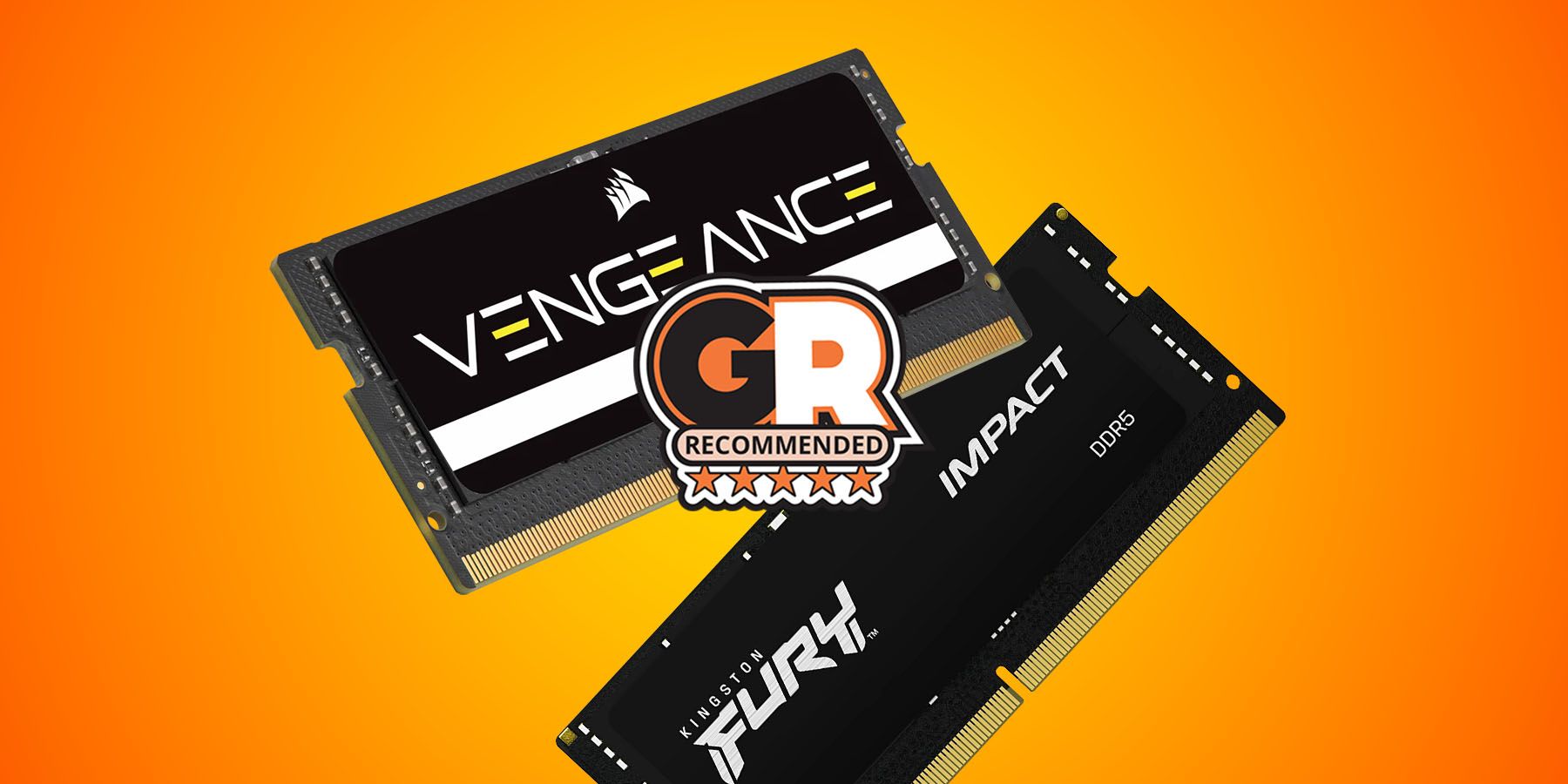
Best DDR5 RAM for Gaming Laptops In 2024
A stable RAM is among the prerequisites for a gaming laptop, and this guide includes the best of the best in the DDR5 class.
When the Steam Deck launched, there was ample confusion about what sort of storage would be beneficial when it comes to upgrading the internal storage of the unit and the speed/capacity that would be ideal. While the capacity question is more akin to asking how much data players would want their Steam Deck to hold at any time, the speed question is one that the Sabrent Rocket 2230 NVMe 4.0 1TB SSD plans to answer and then some. With nearly 5 GB/S read speeds, the Rocket 4.0 SSD in the compatible 2230 form factor is anything but a slouch, clocking in about twice as fast as the Steam Deck's own SSD offerings.
It must be noted that the Steam Deck supports only PCI-E Gen 3 x 4 which does mean that the Rocket has excess speed which would be bottlenecked here as a PCI-E 4.0 drive running in 3.0 mode. But when the Steam Deck console has a performance bottleneck, the DRAM-less offering from Sabrent easily maxes it out, making it a great upgrade to have at a price tag that isn't too far north of a decent, high-end PCI-E 3.0 SSD in a 2230 cut which could also entail availability challenges in that form factor.
The Kingston NV2 isn't the fastest PCI-E 4.0 SSD on the block, but it doesn't have to be. It offers essentially peak PCI-E 3.0 SSD performance at a price tag that can't be argued against. With 1TB of storage being nearly 30-40% cheaper than more premium NVMe SSD alternatives, the NV2 is a great, inexpensive way to get a PCI-E 4.0 SSD in 2024.
It offers a mid-range controller while skipping DRAM altogether, which could entail some performance issues versus SSDs that do use a DRAM cache. Some users have reported reliability issues, which also need to be accounted for, but the decent TBW rating, a handy 3-year warranty, and inexpensive pricing across storage sizes ranging from 250GB to 4TB make it a great general-purpose SSD for additional storage down the line.
Picking The Best SSDs In 2024
As a rule of thumb, Game ZXC has gone with a minimum of PCI-E 4.0 or high-speed PCI-E 3.0 SSDs that are at least 1 TB in size to allow flexibility for buyers. Preference is given to well-established SSD brands that have multiple sizes of the same SSD in play. Other factors that should be considered before choosing an SSD include:
Brand value: More often than not, users prefer sticking with more well-known brands even though some other brands may offer somewhat better performance at a lower price.
Reliability: Every SSD comes with a warranty and a theoretical lifecycle. There are metrics like Total Bytes Written (TBW) and Mean Time Between Failure (MTBF) that tell users how reliable and durable an SSD is.
Capacity: Capacity is totally subjective. While ideally, one would want the biggest capacity supported by their device, there is always a compromise between capacity and price. In the current market, 1TB is the typical size for an SSD meant to be used for gaming.
Read and write speeds: How fast an SSD can read or write data is measured in MB/s. The type of connection typically defines how fast an SSD can operate with PCI-E connections being much faster than SATA connections. However, not all SSDs hit their theoretical max speeds.
SATA vs NVMe: There are two major types of connections an SSD can use to communicate with the motherboard, SATA and NVMe. Most modern hardware supports NVMe standards, along with SATA connections. Some devices support only NVMe-style storage to save space and deliver better performance.
Finding the Best SSDs for Gamers
The team at Game ZXC focuses on a mix of the following metrics to determine which of the SSDs above conform to the lofty standards that both gamers and modern games have of fast, non-volatile storage in 2024:
Brand Value
While most SSD internals are built by a few manufacturers including the flash memory and the controller, many users prefer opting for more well-known brands. This can be due to warranty offerings, after-sales support, and in some cases, software offerings including firmware updates that can help fix issues or enhance performance.
Reliability
As stated earlier, brands often assign warranties to an SSD for their presumed 'typical' lifecycle. However, there is another measure (which is also reflected in the warranty terms) known as Total Bytes Written (TBW), also used interchangeably with 'Terabytes Written' by some users given that it is typically quoted in TB. This, coupled with MTBF (Mean Time Between Failure), measured in hours, tells users what the average failure rate for an SSD looks like.
Capacity
The sweet spot for price, performance, and availability currently seems to be geared at SSDs 1TB or higher. There are SSDs with less storage space, but they are typically far less cost-efficient than their larger alternatives. At the same time, prices are expected to take off in 2024 for larger SSDs (2TB+), potentially due to production cuts in play from various players in the market.
Read And Write Speeds
Not all SSDs are created equal. SSDs that support a certain specification might not always max it out. PCI-E Gen 4.0 SSDs for example can offer speeds as low as 2000 MB/s for read and write functionality, if not lower while capping out at somewhere around the the 7400 MB/s mark, quite close to its theoretical 7,880 MB/s. Finding an SSD that meets one's performance needs is key to getting the most out of fast storage even as prices for higher performance continue to average lower thanks to newer PCI-E 5.0 SSDs coming into the market.
SATA vs NVMe
This boils down to the capabilities of the system in question. Most legacy systems offer SATA SSD support, while newer PCs, Laptops, and game consoles support NVMe-based SSD storage. Most SATA-based SSDs tend to be limited to the maximum speeds offered by the interface, which is 550MB/s to 600MB/s for most SATA III SSDs when accounting for data transfer overhead compared to PCI-E-based NVMe SSDs that can offer anywhere from 1000MB/s to as much as 14000MB/s down the line for the PCI-E 5.0 interface.

The Best DDR5 RAM for Gaming PCs in 2024
DDR5 is all the rage of late, but not all RAM kits are made equal. Finding the right RAM can significantly help boost a PC's performance.
FAQ
Q: What SSD should gamers get for the PlayStation 5?
A PS5 requires any SSD with a read speed of at least 5500 MB/S and a decent heatsink. There are multiple SSDs in Game ZXC's guide that comply with those requirements, but the WD SN850X pick is recommended because of its better price-to-performance ratio and built-in heatsink.
Q: Can gamers run a PCI-E 4.0 M2 SSD on an older slot?
Yes, M2 socket SSDs are backward compatible and work with older generations of the same socket, but they are limited to the PCI-E lane's maximum speeds on offer.
Q: What is the maximum SSD size with PlayStation 5?
The PlayStation 5 officially supports anywhere from 250GB to 8TB of external SSD Storage by default. This could change in the future via software updates by the video game giant as games continue to take up increasingly large amounts of space.



